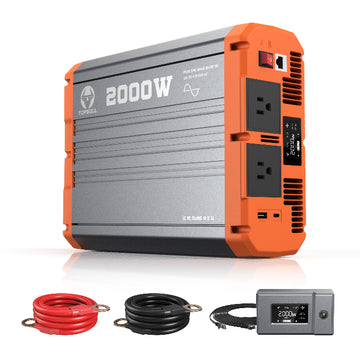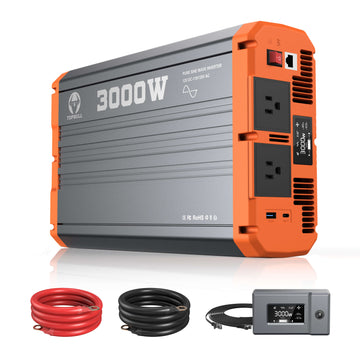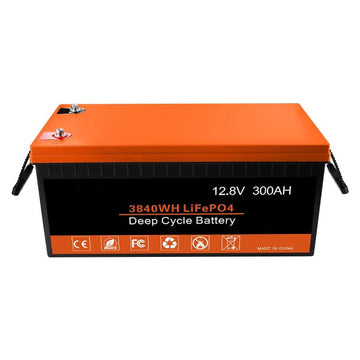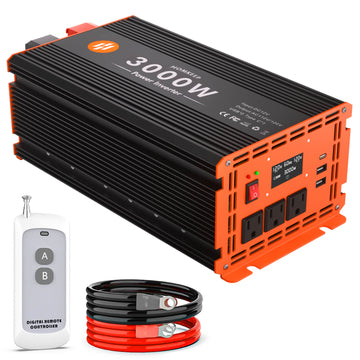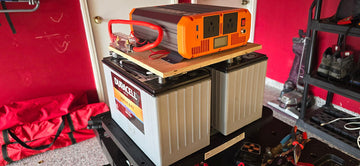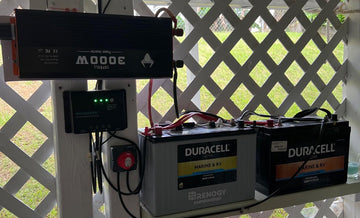In the pursuit of sustainable energy solutions, solar panels, as a key technology for converting solar energy directly into electricity, are increasingly attracting global attention and application. However, as we revel in the feat of solar panels in converting endless sunlight into clean electricity, a subtle but critical question quietly emerges: are solar panels also inadvertently reflecting the sun's heat? This question not only touches on the core of solar technology efficiency, but also relates to the delicate balance of environmental temperature regulation, ecological balance and even global climate change.
As a green bridge between the sun and the earth, the optimisation of the performance of solar panels and their harmonious coexistence with the environment are the goals we all pursue. As a part of this complex system, the importance of heat reflection cannot be ignored. It is like a double-edged sword, which can be a powerful tool to enhance the efficiency of solar energy systems, or a subtle factor that affects the local climate, vegetation and even the survival of wildlife. Therefore, in-depth analysis of the heat reflection characteristics of solar panels is not only an exploration of the technological boundaries, but also a practice of the concept of harmonious coexistence between human beings and nature.
In this paper, we aim to unravel the mystery of the heat reflection characteristics of solar panels, and through scientific perspective and rigorous analysis, we will reveal the physical mechanisms behind them, the factors affecting them, and the strategies to deal with them in practical applications. We will explore how to minimise unnecessary heat reflection losses while maximising solar energy conversion efficiency, so as to achieve a win-win situation between technological development and environmental protection. This is not only a reflection of our deep understanding of solar energy technology, but also an outlook and leadership for the future direction of green energy development.
Table of contents:
How solar panels work and heat
Solar panels are primarily made of photovoltaic materials that capture sunlight and convert it into electricity. The surface of the panel is usually made of silicon. The process of converting light energy into electricity by photovoltaic cells involves the absorption of photons, the excitation of electrons, and the generation of an electric current. During this process, the solar panel absorbs most of the sunlight's energy, but some of the energy is also reflected or given off in the form of heat.
The presence of heat energy has a significant impact on the performance of solar panels, and excessive temperatures may lead to reduced panel efficiency or even damage. Therefore, thermal management becomes a critical aspect of solar panel design.
Thermal Reflection Characteristics of Solar Panels
Definition and Mechanism of Thermal Reflection
Thermal reflection is the ability of an object's surface to reflect the thermal portion of solar radiation. In the case of solar panels, the glass covering on the surface has certain heat reflective properties. This layer of glass not only protects the silicon wafers inside from the external environment, but also reflects and refracts incoming sunlight to a certain extent through its specific optical properties. This reflection makes it possible for part of the solar radiation to be reflected directly back into the atmosphere instead of being absorbed by the silicon wafer.
Measurements and data on solar panel heat reflection
Experimental studies have shown that there are differences in the thermal reflectivity of different types and brands of solar panels. This depends on factors such as the nature of the surface material, the coating technology, and the manufacturing process. Generally speaking, a highly efficient solar panel will minimise unnecessary heat reflection losses while ensuring sufficient light absorption. In addition, environmental factors such as temperature, humidity, and angle of the sun will also have an impact on thermal reflectivity.
Relationship between heat reflection and solar panel efficiency
The effect of heat reflection on solar panel efficiency has two sides. On the one hand, the right amount of heat reflection helps to reduce overheating during the operation of solar panels, thus protecting the silicon wafers from high-temperature damage and improving the long-term stability of the system. On the other hand, excessive heat reflection can lead to a reduction in the amount of light energy that can be absorbed, which in turn reduces the conversion efficiency of the solar panel. Therefore, a balance needs to be found in the design and manufacture of solar panels to optimise the heat reflection characteristics.
Environmental impacts of heat reflective properties
The environmental impacts of heat reflective properties can be seen in a variety of ways, including urban climate, ecosystems, energy efficiency of buildings, and human health. The following are some of the important impacts:
- Reduced heat build-up: Building materials and paving with high heat reflectance (e.g. light colours or smooth surfaces) can effectively reduce heat absorption and thus mitigate the urban heat island effect. This helps to lower urban temperatures and improve the comfort and living environment of residents.
- Environmental resilience: When designing urban surface materials, choosing highly reflective materials can make cities more resilient to climate change and reduce energy consumption.
2. Energy efficiency of buildings
- Reduced cooling demand: Highly reflective materials can reduce a building's reliance on air conditioning, thereby reducing energy consumption. Reducing energy demand not only lowers electricity bills, but also reduces greenhouse gas emissions.
- Improved comfort: In hot climates, highly reflective materials on the exterior of a building can reduce the internal temperature of the building and improve occupant comfort.
3. Ecosystem impacts
- Impact on vegetation and biodiversity: The use of highly reflective materials in cities can reduce surrounding temperatures, help to protect some specific plant and animal species and maintain ecological balance. However, if not planned for, the survival of specific species may be affected.
- Microclimate formation: Highly reflective surfaces may cause changes in microclimatic conditions in certain areas, affecting the local hydrological cycle and plant growth.
4. Air quality
- Reducing thermal pollution: By lowering the temperature of the ground and surrounding air, thermally reflective materials can help reduce airborne ozone levels and reduce thermal pollution.
- Influence the dispersion of pollutants: Areas with cooler temperatures help dilute and disperse pollutants, improving overall air quality.
5. Human Health
- Reduces heat stress: Reducing ambient temperatures can help reduce heat-related health risks such as heat stroke and cardiovascular disease, especially important for the elderly and susceptible populations.
- Improved quality of life: By reducing ambient temperatures, heat reflective properties can improve people's quality of life and increase the comfort of outdoor activities.
With the acceleration of urbanisation and the promotion of renewable energy sources, solar panels are increasingly used in cities. However, the impact of their heat reflective properties on the urban environment is also becoming more prominent. To mitigate this problem, urban planners and architects need to give due consideration to factors such as the layout, orientation and angle of solar panels to reduce their impact on the urban thermal environment.
How to reduce the heat reflective properties of solar panels
Reducing the thermal reflective properties of solar panels can be achieved in a number of ways, aiming to reduce the impact of heat on the surrounding environment while maintaining their power generation efficiency.
1. Optimising surface coatings
Use of low reflective coatings: Coating materials with low reflectivity and high light transmittance are selected as surface coverings for solar panels. These coatings effectively reduce the reflection of sunlight while allowing more sunlight to penetrate and be absorbed by the solar panel.
Application of anti-reflective film: Applying anti-reflective film to the surface of solar panels, which usually has tiny prismatic projections, can attenuate the reflected light and reduce the reflective problem. Reflection-reducing film is not only applicable to monocrystalline and polycrystalline silicon solar panels, but also to other types of solar panels.
2. Adjust the installation angle and orientation
Reasonable layout: According to the angle and intensity of local solar radiation, the installation angle and orientation of solar panels should be reasonably laid out. Generally speaking, making the solar panels perpendicular or nearly perpendicular to the sun's rays can maximise the amount of solar radiation they receive, while reducing the amount of reflected light caused by improper angles.
Avoid specular reflection: Try to avoid the condition of specular reflection when installing solar panels, such as installing solar panels in a location with a shelter to reduce the interference of reflected light on the surrounding environment.
3. Increase light-absorbing materials
Use of velvety substrate: the use of substrate materials with velvety structure inside or on the surface of solar panels can increase the scattering and absorption of light and reduce reflection losses. The velvety substrate allows light to be reflected and scattered many times inside the solar panel, thus increasing the efficiency of light absorption.
4. Green segregation
Planting trees and vegetation: Planting tall trees and vegetation around solar panels can reduce the intensity of reflected light and absorb some of the heat. Trees and vegetation can not only beautify the environment, but also provide some shade for the solar panels, reducing their efficiency loss due to overheating.
5. Improved design
Optimise panel structure: By improving the structural design of solar panels, such as using micro-nano structures, light traps and other designs, it is possible to increase their ability to absorb light and reduce reflections. These designs allow light to propagate and scatter inside the solar panel for a longer period of time, thus increasing the photoelectric conversion efficiency.
6. Regular Maintenance
Keep clean: Regularly cleaning the surface of solar panels to remove dust, dirt and other obstructions can ensure their surface finish and reduce the generation of reflected light. At the same time, cleaning can also improve the transmittance and photoelectric conversion efficiency of solar panels.
FAQs
1. Do solar panels absorb heat or light?
Solar panels are primarily used to absorb energy from light (sunlight) in order to convert it into electricity. While they do absorb some heat, their primary function is to convert light energy into electricity through the photovoltaic effect. The panels generate heat as they operate, but this heat is a by-product and is not usually used for direct thermal energy use.
2. Do solar panels cause a heat island effect?
Solar panels themselves are not a major contributor to the heat island effect. The heat island effect is usually caused by urbanisation and land use changes, especially temperature increases caused by an increase in hardened surfaces such as buildings and roads. However, large solar panels working in the sun absorb heat and slightly raise the temperature of the surrounding air, but the impact of the heat island effect is negligible relative to other areas of the city.
3. Do solar panels affect rainfall?
The presence of solar panels by itself does not significantly affect rainfall. Variations in rainfall are largely determined by atmospheric conditions, weather patterns, and topography. Although large areas of solar panels may alter localised ground temperatures and humidity, their effect on rainfall is minimal.
4. Do solar panels heat the surrounding air?
Solar panels convert some of their light energy into heat when they are in operation, and this may result in a slight increase in the temperature of the surrounding air. However, this effect is usually limited because the heat from solar panels is usually dissipated by radiation, convection and evaporation. Overall, they have a relatively small effect on the temperature of the surrounding environment.
5. Can solar panels work in reflected sunlight?
Yes, solar panels can work in reflected sunlight, but their power generation efficiency will be reduced. Reflected light can still be absorbed by the panels, but it is usually less efficient than direct sunlight. The use of reflected light (e.g. through light-guiding structures) can optimise the use of light, but the best results are achieved in direct sunlight.

